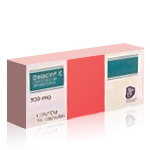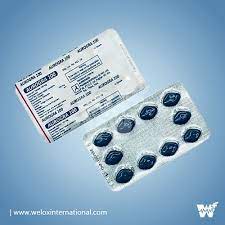Cleocin


Generic Name and Synonyms: Clindamycin, Clincin, Dalcap, Chlolincocin, Clinda-Derm, Clindagel, Clindamicina, Clindesse, Clindets, Clinimycin, Dalacin
With prescription:Yes
Product description: Cleocin (Clindamycin) is an antibiotic that fights bacteria in the body. Cleocin (Clindamycin) is used to treat serious infections caused by bacteria. Cleocin (Clindamycin) can also be used for other purposes not listed in this medication guide.
Classification: It belongs to the group of lincosamides.
Contraindications: History of hypersensitivity to lincomycin and clindamycin.
Overdose, Toxicity and Treatment: Intravenous doses of 855 mg / kg in mice have shown toxic. Hemodialysis or peritoneal dialyses are effective in removing clindamycin from the plasma.
Drug Interactions: The effects of muscle-blockers may increase and there is an antagonism with erythromycin in vitro and it is preferable to avoid administration. Interaction with opioids increases the activity of neuromuscular blockers may have a depressant effect on the respiratory system or paralysis (apnea) as recommended closely monitoring respiratory function.
Storage Recommendations: The capsules should be stored at 20 ° C to 25 ° C.

Important Information of Cleocin (Clindamycin)
Do not use this medication if you are allergic to clindamycin or lincomycin (Bactramycin, L-Mycin, Lincocin). Do not take clindamycin together with erythromycin (EES, EryPed, Ery-Tab, Erythrocin, others). Before using clindamycin, tell your doctor if you have kidney disease, liver disease, an intestinal disorder such as colitis or Crohn’s disease or a history of asthma, eczema, or allergic skin reaction. Take this medication for the full time your doctor prescribed it. Your symptoms may improve before the infection is completely healed. Clindamycin will not treat a viral infection like the common cold or flu. Antibiotics can cause diarrhea, which may indicate a new infection. If you have diarrhea that is watery or bloody, stop taking Cleocin and talk to your doctor. Do not use medicine for diarrhea unless your doctor has prescribed. To be sure this medication is not causing harmful effects; it may be needed to test your blood regularly. You may also need to measure the function of your kidneys or liver. Visit your doctor regularly. If you need surgery, tell the surgeon ahead of time that you are using clindamycin. You may need to stop using the medicine for a short time.
How to use cleocin
Clindamycin belongs to the group of medicines called macrolides and lincosamides. This remedy is indicated for the treatment of recurrent infections caused by germs sensitive and unresponsive to antibiotics of first choice and as an alternative treatment for infections caused by aerobic Gram-positive bacteria in patients allergic to penicillin. Clindamycin is indicated in the following infections that are of severity:
- Respiratory tract infections
- Infections of skin and soft tissue
- Bone and joint infections
- Female genital and pelvic infections
- Intra-abdominal infections
- Serious infections (except cerebrospinal infections) caused by gram-positive microorgnismos (except Enterococcus faecalis), in particular Staphylococci spp, including strains of Streptococcus pneumoniae sensitive to penicillin.
Clindamycin should not be used in the treatment of meningeal infections due to its low penetration into the cerebrospinal fluid. Nor should it be administered to patients with acute viral infections of the respiratory tract. Clindamycin should be reserved for serious infections that is not appropriate to use other less toxic antibiotics. Also, the presentation in ampoules, in combination with other drugs, is effective in treating the following infections:
- Encephalitis (inflammation of the brain) toxoplasmosis in AIDS patients.
- Pneumocystis carinii Pneumonia in AIDS patients.
Medizzine advised to consult your doctor if you know the reason that has ordered clindamycin Components of business presentations Capsules: The active substance is clindamycin (hydrochloride). Each capsule contains 150 or 300 mg of clindamycin. The other ingredients (excipients) are: lactose monohydrate, corn starch, talc, magnesium stearate, brilliant blue (E133), titanium dioxide (E171), gelatin and printing ink (shellac, propylene oxide, black iron ( E172) and potassium hydroxide). Injectables: Clindamycin phosphate addition, other ingredients are benzyl alcohol, sodium hydroxide and water for injection. Warning: The composition of the presentations may vary from country to country. We recommend reviewing the information provided by your local provider.
Cleocin side effects
Seek emergency medical attention if you notice any of these signs of an allergic reaction: hives, difficulty breathing, swelling of the face, lips, tongue, or throat. Stop using clindamycin and call your doctor immediately if you have a serious side effect such as: diarrhea that is watery or bloody;
- jaundice (yellowing of the skin or eyes);
- urinating less than usual or not at all;
- fever, chills, body aches, flu symptoms, sore mouth and throat;
- rash, severe tingling, numbness, pain, muscle weakness;
- easy bruising, unusual bleeding (nose, mouth, vagina, or rectum), spots under the skin in a purple or red, or
- fever, sore throat and headache with a severe rash with red skin sores and peeling.
Less serious side effects may include:
- changes in bowel habits (especially older adults);
- mild nausea, vomiting, or stomach pain;
- joint pain;
- vaginal itching or discharge;
- mild rash or itching, or
- sore throat.
This list may not describe all possible side effects and others may occur.
Clinical uses
Clindamycin belongs, together with lincomycin, the group of lincosamides. It is a synthetic derivative of lincomycin, which was obtained in 1966. Because of its higher activity and broader spectrum, it replaced the previous practice. It initially was introduced as an antistaphylococcal. Later I probed to be a powerful antianaerobio. Clindamycin inhibits bacterial protein synthesis by binding to the bacterial ribosome 50S subunit, preventing peptide chain initiation. The binding site on the ribosome is the same as for macrolides and chloramphenicol inhibit their actions by competitors. Therefore, these agents are antagonistic and should not be used concurrently. Clindamycin is a useful alternative to beta-lactams in infections caused by Staphylococcus aureus. Should be considered in case of infection by anaerobic bacteria which may be involved other anaerobes resistant to penicillin, if they are not localized to central nervous system. Is also used to:
- Intra-abdominal infections: In combination with antibiotics active against gram-negative bacilli, can be used in diverticulitis, biliary tract infections, intestinal fistulae infections, liver abscess or abdominal abscess, penetrating trauma.
- Female genital tract infections.
- Upper respiratory infections.
- Pleuropulmonary infections.
- Diabetic foot.
- Skin and soft tissue: cellulitis, furunculosis, anthrax, folliculitis, impetigo.
- Osteomyelitis.
- Head and Neck Surgery: To reduce the incidence of infectious complications.
- Bacterial vaginosis.
- Toxoplasmosis.
- Pneumocystosis.
Do not use this medication if you if:
- You are allergic to clindamycin or lincomycin (Bactramycin, L-Mycin, Lincocin), or
- If you are also taking erythromycin (EES, EryPed, Ery-Tab, Erythrocin, others).
If you have any of these other conditions, you may need dosage adjustments or special tests of clindamycin:
- colitis, Crohn’s disease or other intestinal disorder;
- kidney disease;
- liver disease, or
- A history of asthma, eczema, or allergic skin reaction.
Pregnancy Category B was given by the FDA. Clindamycin is not expected to be harmful to an unborn baby. Tell your doctor if you are pregnant or plan to become pregnant during treatment. Clindamycin can pass into breast milk and may harm a nursing baby. Do not use this medication without first talking to your doctor if you are breast-feeding a baby.







